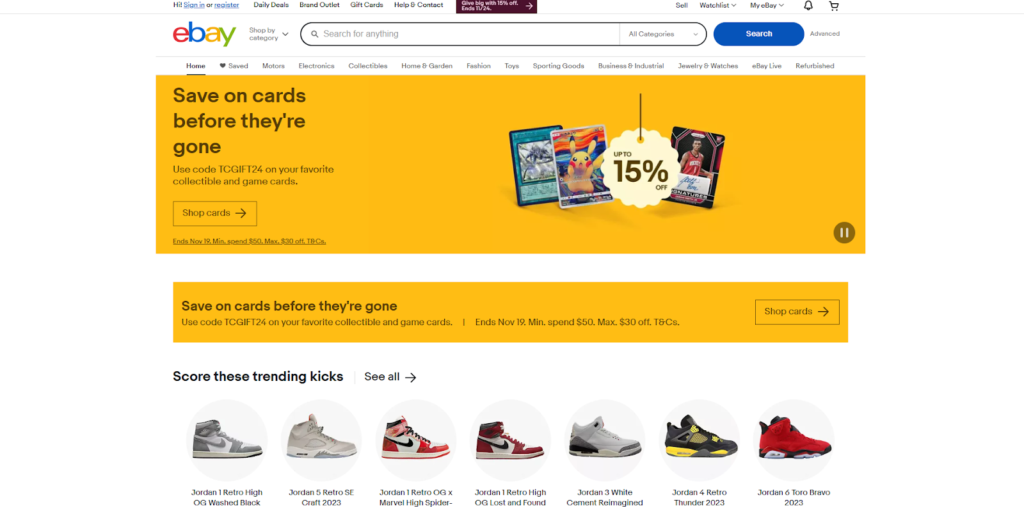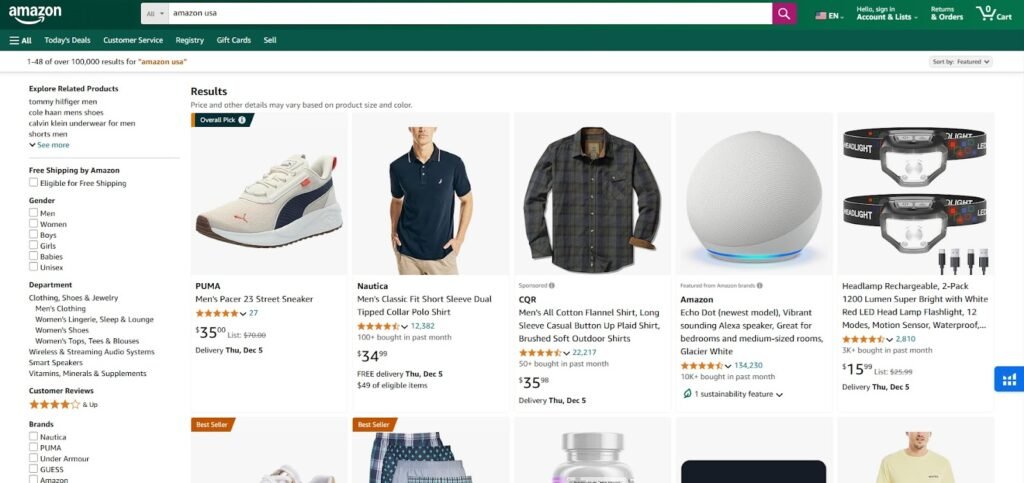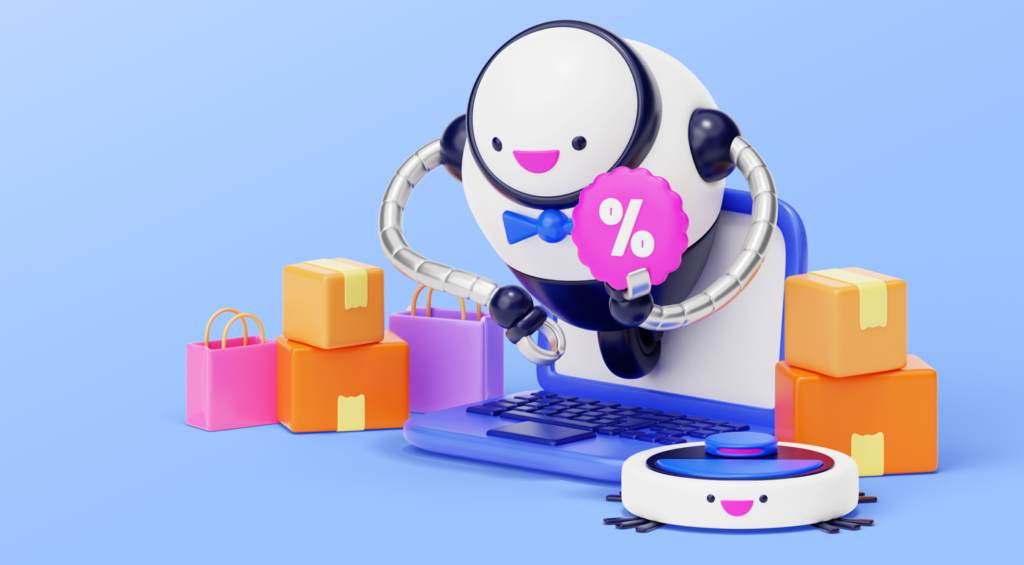E-commerce has transformed the way designers can turn their creativity into profit. With countless platforms at your fingertips, the opportunities to showcase your expertise in making money online have never been greater. By mastering platform dynamics and leveraging standout design elements, you can craft a thriving online business.
Choosing the Right E-commerce Platform
Selecting a platform that aligns with your design goals is crucial for maximizing your potential in making money online. Here’s a comparison of three popular options:
1. eBay

Image Source: e-bay.com
eBay is a global marketplace known for its auction-style and fixed-price sales, making it an excellent option for beginners interested in making money online.
Pros:
- Established marketplace with a vast audience.
- Quick setup for immediate sales.
- Built-in traffic and customer base.
Cons:
- High competition.
- Fees that can reduce profits.
- Limited control over branding and customer relationships.
2. Amazon

Image Source: amazon.com
Amazon offers access to a massive customer base and provides fulfillment services, making it a popular choice for creatives aiming to start making money online quickly.
Pros:
- Extensive customer reach with established trust.
- Fulfillment by Amazon (FBA) simplifies logistics.
- High potential for sales volume.
Cons:
- Strict seller policies with risk of account suspension.
- Intense competition and frequent price wars.
- Minimal control over customer data and relationships.
3. Shopify

Image Source: shopify.com
Shopify enables the creation of personalized online stores, a powerful tool for designers serious about making money online while maintaining full control over their brand
Pros:
- Complete control over branding and customer experience.
- Scalable solutions for businesses of all sizes.
- Access to a wide range of apps and integrations.
Cons:
- Monthly fees and additional costs for apps.
- Responsibility for driving traffic to your store.
- Requires time to set up and manage.
Designing for E-commerce Success
As a designer, your expertise can significantly enhance your e-commerce venture:
- Brand Identity: Develop a cohesive brand that reflects your design aesthetics and appeals to your target audience.
- User Experience (UX): Ensure intuitive navigation, fast load times, and mobile responsiveness to provide a seamless shopping experience.
- Product Presentation: Utilize high-quality images and detailed descriptions to showcase your products effectively.
Leveraging AI Tools for Enhanced Design

Incorporating AI tools can streamline your design process and improve product presentation:
- AI Background Generators: Create professional product photos with customizable backgrounds to match your brand’s aesthetic.
- AI Photo Editors: Enhance images by adjusting lighting, removing imperfections, and adding creative effects.
For instance, ProductScope AI offers a suite of tools designed to assist designers in creating compelling e-commerce visuals.
Conclusion
By selecting the appropriate platform and leveraging your design skills, you can create a profitable e-commerce business that stands out in the competitive online marketplace. Emphasizing branding, user experience, and product presentation will not only attract customers but also foster loyalty and drive sales.
For a comprehensive guide on making money with e-commerce, visit ProductScope AI’s detailed article.
